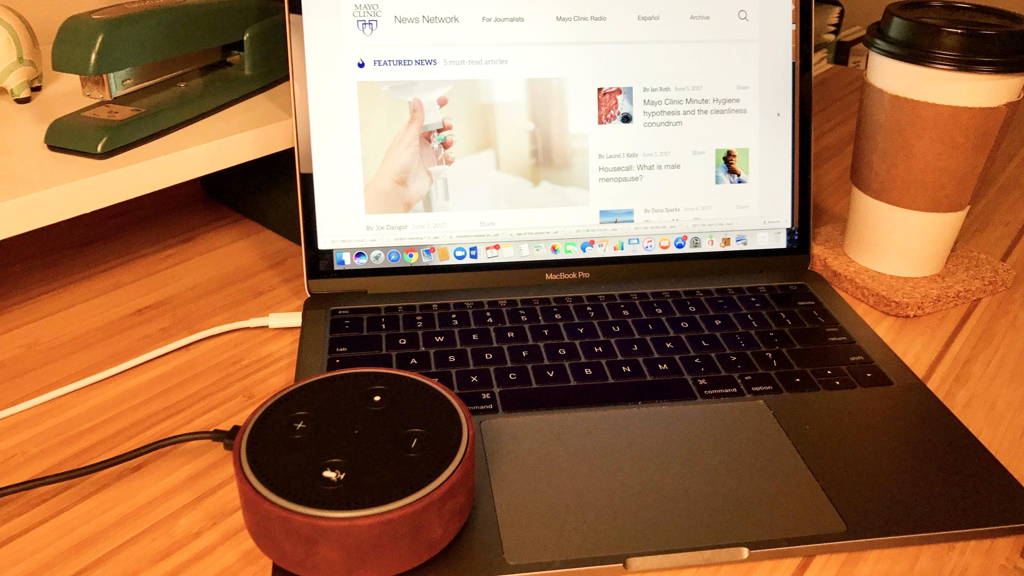Consumers can program Mayo Clinic News Network content on the voice-activated platform through the Alexa app or the Amazon website. "At Mayo Clinic, the needs of the patients come first, and this latest technology is one more way to reach patients where they are," says John T. Wald, M.D., medical director, Mayo Clinic Public Affairs and Marketing.
A recent report estimates that more than 35 million Americans will use a voice-activated tool at least once a month this year. In the future, Mayo Clinic plans to offer more voice-driven health and wellness information, and lifesaving tips from the source where millions of health consumers turn, mayoclinic.org.
Health smart home
The market for smart home speakers, speech activated smart home equipment et cetera is growing quickly. Home health monitoring device shipmentsfor example will top 28 million by 2021, forecasts ABI Research.Home health monitoring devices are evolving to be more mobile and sensitive to the requirements of elderly, disabled, and other vulnerable people who need to feel safe and independent. New devices that work outside the home, as well as connected movement trackers, fall detectors, and medication dispensers, are expanding a market that was once limited to at-home Personal Emergency Response Systems (PERS).
Google, Amazon, Apple
A report from Strategy Analytics forecasted last October that the market for digital voice assistant devices will rise quickly from 1.8 million units shipped in 2016, to 2.9 million in 2017 and 15.1 million by 2020. The core purpose of such devices is to capture, process and act on task-oriented, voice-based requests and queries, with Google’s cylinder-shaped Google Assistant set to compete with Amazon’s Alexa-enabled devices.Apple has started manufacturing a smart speaker controlled by its digital assistant software Siri, people familiar with the matter told Bloomberg earlier in June. Apple could debut the speaker as soon as its annual developer conference in June, but the device will not be ready to ship until later in the year, the report said.
Right now Echo is by far market leader, but Google’s Assistant is set to overtake Amazon’s Alexa and lead the smart speaker segment by the end of 2020, according to a report from IHS Markit. The report estimates 2017 platform shipments of smart speakers at a conservative 4.1 million units for Alexa, and 1.5 million for Google Assistant. However, Google Assistant is expected to out-ship Alexa by 2020, by which time the market is expected to grow to a base of 45 million units.
Growing use
April 2017 research from GfK shows that 76 percent of US consumers (ages 13 to 64) have used voice commands on any device. Within this group, 69 percent say they have used speech to operate a smartphone; tablets (21 percent), car radios and navigation (20 percent), PCs (18 percent), and TV sets (14 percent) registered much lower levels.Eleven percent of consumers say they own either a digital home assistant (DHA) like Amazon Echo/Dot (10 percent) or Google Home (2 percent). And, among non-owners, intent to buy a DHA is low (just 3 percent are “very likely” to purchase one in the next year).
The study explores the general use of voice commands with technology devices, along with a deep dive into the usage of Amazon Echo and Google Home devices. The report shows that almost half (46 percent) of those who own DHAs say they use the devices at least regularly, and two in ten (19 percent) turn to them “all the time.” Playing music is by far the most common application for the assistants, cited by two-thirds (63 percent) of DHA owners.

